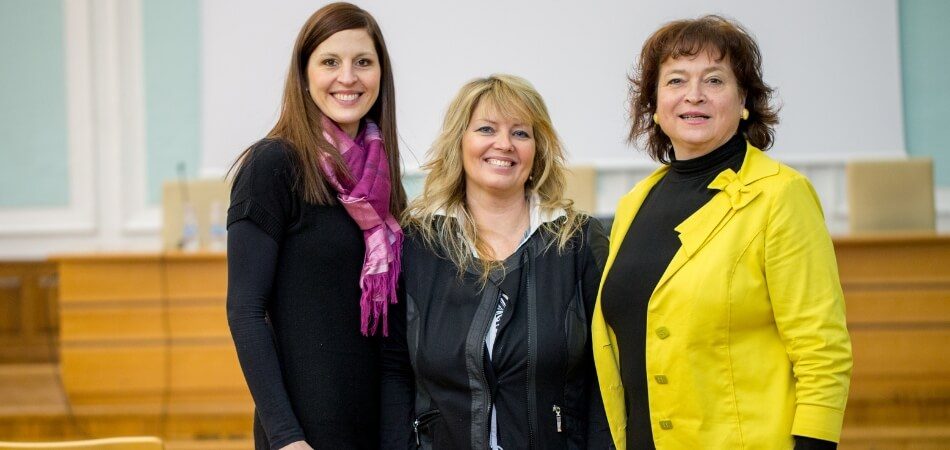Organizing a successful conference is a massive accomplishment, but the work doesn’t end when the last session concludes. Many planners wonder what do you do after the conference to maintain the momentum they’ve generated. The key is to capitalize on the relationships formed and the knowledge exchanged.
Start by expressing gratitude and thanking participants for their engagement and contributions. Ensure the experience remains fresh in their minds by seeking feedback, which not only refines future events but also keeps the conversation going.
Stay proactive by updating the conference website, disseminating information through newsletters, and setting the stage for the next big event. In this blog, we’ll dig deeper into each of these steps, guiding you to promote long-lasting connections and a legacy for your event.
What to Expect at a Conference?
Attending a conference can be both exciting and overwhelming, especially if it’s your first time. From networking opportunities to informative sessions, the experience is rich and varied. Here’s a brief glimpse into what to expect.
Conferences typically kick off with an opening keynote, setting the tone for the event. Renowned speakers share insights, aiming to inspire attendees with fresh perspectives. This sets the stage for deeper explorations in breakout sessions.
Parallel to the main sessions, exhibitors often showcase their products or services. This is an ideal space to discover new tools, solutions, or research relevant to your field. Networking breaks intersperse the day, providing chances to connect with peers, mentors, or potential collaborators.
In general, most global conference organizers conclude their events with a closing ceremony akin to a city tour. This ceremonial moment serves to encapsulate crucial insights, while also spotlighting exceptional contributions or accomplishments. Armed with newfound knowledge and strengthened networks, participants depart feeling motivated and more adept for their professional endeavors.
Key Features of a Conference
Conferences are dynamic events designed to promote learning, networking, and the exchange of ideas among professionals. They can vary in size, focus, and format. However, several key features define the essence of these gatherings.
Keynote Addresses
High-profile experts often deliver these speeches, setting the event’s thematic tone. They inspire attendees, providing overviews of pertinent topics. Keynotes are highlights, drawing maximum attention.
Breakout Sessions
These smaller, focused gatherings facilitate deeper dives into specific subjects. Attendees choose sessions that match their interests, gaining specialized knowledge. Diverse speakers ensure comprehensive topic coverage.
Networking Opportunities
Scheduled breaks, luncheons, or mixers promote interpersonal connections. Attendees exchange ideas, build collaborations, and often find potential business partners. These interactions enhance the conference’s value.
Exhibition Halls
Companies or researchers showcase innovations, products, or services here. Attendees explore these booths, learning about the latest industry advancements. It’s a space where business meets innovation.
Workshops and Tutorials
Practical skills and hands-on training are imparted in these sessions. Professionals enhance their abilities, guided by experts in the field. It’s learning coupled with real-world application.
Conferences, with their multifaceted features, are more than just meetings. They’re platforms for growth, collaboration, and continuous learning in a rapidly evolving professional landscape. Attend with purpose and leave enriched.
What Do You Do After the Conference?
After a conference, the activities and follow-ups you engage in are crucial to maximize the benefits of your attendance. Here’s a structured approach:
Expressing Gratitude: Building Long-Term Relationships
After the conference, it’s essential to acknowledge the individuals you engaged with. By sending personalized thank-you notes to presenters, organizers, and new contacts, you not only show appreciation but also lay the foundation for a longer-term relationship. Remember, in the professional realm, a small gesture can go a long way in promoting mutual respect and recognition.
Organizing and Reviewing Materials: Setting the Stage for Action
Conferences often result in a deluge of materials: notes, brochures, conference business cards, and more. Systematically categorizing these resources aids in recalling salient points and determining subsequent steps. By digitalizing key details and creating a structured archive, you ensure that the wealth of information remains accessible and actionable.
Follow-up on Connections: Capitalizing on Networking
One of the primary benefits of attending conferences is networking. To derive value from these newly formed relationships, proactive follow-up is crucial. Whether it’s initiating collaborative projects, exploring business opportunities, or furthering academic discourse, these interactions can be the catalyst for significant professional advancements.
Sharing Knowledge: Multiplying the Benefits
Disseminating the insights and knowledge acquired at the conference within your organization or peer group is invaluable. Hosting a knowledge-sharing session or workshop can empower your team and align them with the latest industry trends, methodologies, or innovations.
Acting on Feedback and Insights: Enhancing Competence
Conferences often provide a platform for feedback, whether it’s on presented work or through informal discussions. Integrating this feedback can be instrumental in refining projects, strategies, or research methodologies, leading to more effective and impactful outcomes.
Updating Digital Platforms: Extending the Conversation Online
In the digital age, professional networking platforms like LinkedIn serve as continuous networking avenues. Sharing your conference experiences, insights, or even photos can encourage discussions, attract potential collaborators, or simply enhance your professional online presence.
Planning for the Next Event: Continuous Improvement
Every conference offers lessons – both in terms of content and the overall experience. By reflecting on these, you can identify areas of improvement for future events. Whether it’s refining your networking approach, selecting sessions more judiciously, or improving your presentation skills, there’s always room for growth.
While the conference might be a short-lived event, the activities you engage in afterward determine the long-term value you derive from it. Strategic follow-ups, sharing, and continuous learning can amplify the benefits manifold.
How to Utilize Resources from the Conference?
Attending a conference often equips professionals with a plethora of resources. These resources, spanning from physical handouts to invaluable insights, represent a wealth of knowledge. Making adept use of them can significantly enrich one’s professional journey, especially when attending a conference for the first time. Below are some techniques to utilize resources from a conference.
Digital Archiving: Beyond Physical Copies
Transition the materials you’ve collected, like brochures and notes, into a digital format. Scanning or photographing them ensures easy accessibility and sharing. A digital archive prevents loss and facilitates easy retrieval.
Content Dissemination: Sharing is Caring
Sharing key takeaways with your team or colleagues multiplies the conference’s benefits. Presenting a summary or conducting a workshop can spread newfound knowledge. Thus, even those who didn’t attend can benefit.
Networking Follow-ups: From Acquaintances to Allies
Revisit business cards and notes to recall meaningful interactions. Initiate further conversations with potential collaborators, mentors, or business partners. This continuation can solidify relationships and open collaboration doors.
Implementing Feedback: Refining for Excellence
Feedback received during the conference, whether formal or informal, is golden. Analyze, discuss, and integrate this feedback into your projects or strategies. Implementing these insights can drive enhanced outcomes and innovations.
Online Engagement: Digital Continuation of the Discourse
Harness the power of online platforms to continue discussions. Engage in post-conference forums, groups, or webinars to dive deeper. This extension of the dialogue ensures sustained learning and connection.
The resources from a conference represent more than mere materials; they encapsulate opportunities. By archiving, sharing, following up, and engaging both offline and online, one can truly maximize the returns on the investment made in attending the conference. Remember, the real value lies not just in acquiring these resources, but in how effectively they’re harnessed post-event.
Final Considerations
Conferences play a very important role in professional development, promoting knowledge exchange and networking. Yet, the journey doesn’t end with the closing ceremony. The question on many attendees’ minds is, “What do you do after the conference?”
One must act decisively in the aftermath to fully harness the event’s value. From expressing heartfelt gratitude for the meticulous organization of resources, from following up on newly established relationships to continuously engaging in digital dialogues, every step is vital.
These proactive measures ensure that the momentum from the conference is recovered. They transform a transient event into an enduring experience, where relationships are nurtured, insights are applied, and the legacy of the event continues to inspire.








